Shop by Industry
Industries we support...
Products
START SHOPPING...
EXPLORE by category
Product Series
Resources
Contact
Find a Dealer
A firefighter's ability to see their environment and have complete situational awareness is key to responding to crisis and saving lives. This guide explains scene lighting, right angle lights, and helmet lights for use in structure and wildland firefighting. We'll discuss different applications of lighting and the features to look for when purchasing safety lighting.
A first responder’s greatest priority is being able to see what's around them. First responders are at a disadvantage when the environment lacks the proper lighting to adequately and effectively perform their tasks. This applies in all areas of the emergency response arena.
From lighting pathways to the warm/cold zones of an incident where rehabilitation, medical care, and support are provided, if a first responder can see, they can respond to the conditions around them rather than react in a defensive posture due to an inability to see the dangers.
A responder needs to search for people or items every day and every shift. Responders need light to help them search, whether it's a victim ejected from a car accident or people trapped in a dark basement.
Task - Even though a first responder needs to search, most of the work will be an immediate range of work done with your hands. It's the area 2-6 feet in front of the first responder. Whether it's working on a patient, extricating someone from a car, or cutting a hole into a roof to vent, they need to have a clear vision of what is directly in front of them.
Safety - 29% of fire ground injuries are due to slip, trips, and falls, or contact with an object. First responders can only truly be effective when they are healthy. Injuries compromise the mission. Fireground injuries require additional resources from the response agency.
First responders are required to do more with less staffing in today’s world of reduced staffing. Safety is one of the primary concerns when answering the call for service.
Being able to see your surroundings clearly is paramount to reducing the potential for injury. Much of a firefighter’s work is indoors or at night. Having a quality light that improves their vision and situational awareness will allow them to see objective hazards and work safer.
A Beacon - Panicked victims in a burning structure will instinctively move towards bright lights, seeking an exit or assistance. In a search and rescue operation in a dark forest, just the sight of that light can provoke a fatigued person to yell for help. The light will serve as a beacon for a confused, desperate victim.
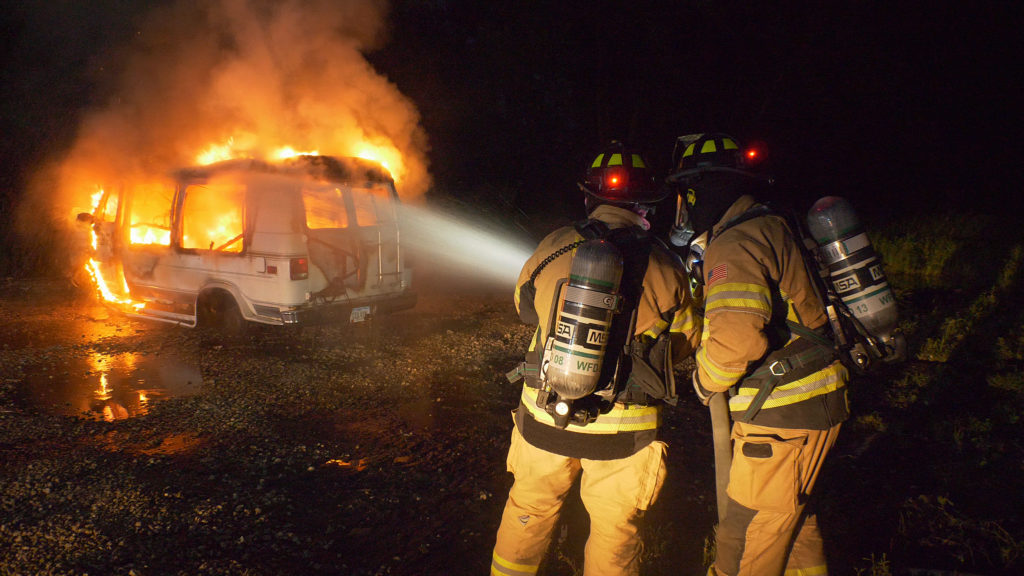
Visual Communication - As a crew leader or company officer, if your crew can see you, they know where you are, what direction you are moving, and what you are doing. In a scenario with compromised vision, such as a smoke-filled room, any visual indication of your position will assist with the entire team's situational awareness and communication.
Ground to Sky Communication - A helicopter pilot or drone camera can provide a scene or area overwatch. It's crucial that they can see firefighters on the ground to know personnel location, especially in poor visibility.
Right angle lights are often firefighter’s primary light source. It has been a mainstay in the fire service for decades. Right angle lights feature a powerful, tight beam that is ideal for long-range search or cutting through thick smoke for interior searches.
The right-angle light has a compact shape to fit on the turnout coat. Its L shape is easy and natural to hold, even with many fire gloves' limited dexterity.
A tight and strong beam - Right angle lights feature a narrow beam optimized for search and cutting through heavy smoke. If the beam is too wide, it will illuminate the smoke in the foreground and reduce visibility.
Durability - The right angle light needs to handle extreme heat, repeated impacts, and submersion in water. Firefighters use their lights in some of the most unforgiving environments. The light should be made with materials that can endure daily abuse. This can be of materials such as heavy-duty nylon that will not become brittle or weak over time.
An often overlooked point with firefighter lights is to ensure the battery compartment closure is solid. A poorly designed battery compartment will come loose in the middle of a call, and all of your batteries will fall out, rendering your light useless. This can also allow moisture intrusion, leading to corrosion, thereby voiding the warranty and degrading the light's performance.
Compact Design - A right angle light attached to the turnout coat needs to be compact to not interfere with movement or become an entanglement hazard while working.
Long Runtime - One of the most important features in a quality light is to be aware of is its runtime. A firefighter typically works a 12 or 24-hour shift. It is imperative that the light lasts an entire shift, or at least until there is a break in between calls, without needing to change batteries. This is often a function of the light, and it also can depend on the types of batteries used.
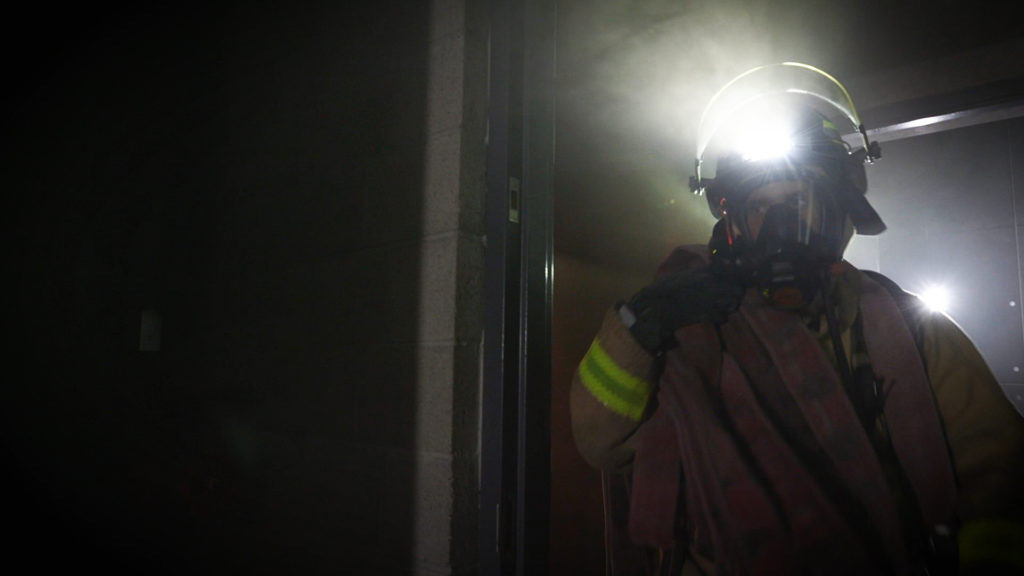
Helmet lights are an essential lighting tool for firefighters. They are relatively light-weight and compact. The biggest benefit provided is their directional focus. This provides the firefighter with task lighting always pointed in the direction they are looking. Front-mounted light and the side-mounted light are the two most common helmet lights.
Front-mounted lights use a strap to go around the helmet. Side-mounted lights clamp or bolt on to the side brim of the helmet.
Helmet lights are ideal for improving situational awareness in dark environments. A helmet light will illuminate a firefighter's immediate path, help to see potential trip hazards along with identifying nearby victims.
The other main use for helmet lights will be task lighting or illuminating the area directly in front when you're working. The helmet light beam is typically less powerful than a right angle light. It's broad beam is ideal for close-range tasks.
Bright, Broad Beam - A helmet light will provide a bright and even panoramic beam of light that is ideal for task lighting and situational awareness. If you are already using a right angle light with a tight beam for search, a panoramic helmet light will complement your lighting setup for a complete array of light.
Good Fit - The helmet light needs to fit on the helmet securely without any issues. Firefighters work in stressful situations and need not be concerned about their light falling off. A front-mounted light should have a fire-resistant silicone strap that fits snug around the helmet. A side-mounted light clamp should lock securely onto the helmet's brim without damaging it by over-tightening the clamp screws.
Adjustability/Tilt - The ability to tilt a helmet light is useful for several reasons. A firefighter can tilt their light down when doing task lighting and then back up when needed to search or walk. Other firefighters will appreciate it when you tilt your light down when talking to them.
Some firefighters will turn their helmet light upside down, so it tilts up rather than down. This makes it easier to read the direction and speed of smoke in an interior structure fire.
Battery-powered scene lights allow for fast deployment and repositioning when conditions dictate. They close down into a compact form for travel and stowing. They can deploy into a tower format with tripod legs. This allows for positioning the light high above heads, fences, and bushes to get an overall illumination.
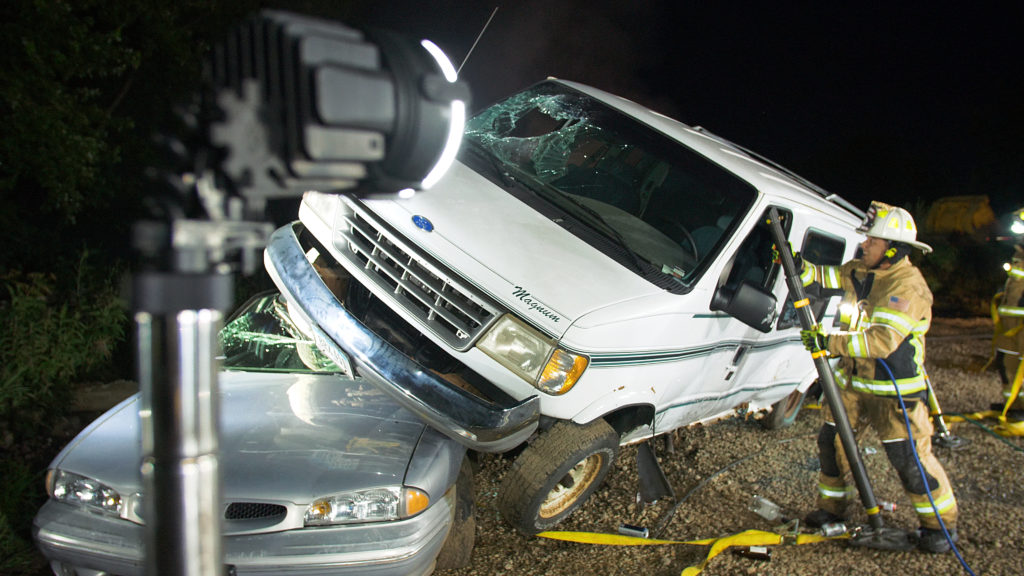
Overall scene lighting - It's beneficial to stage scene lights in dark, high traffic areas around the fire scene to illuminate trip hazards and other dangers. This will create a safer environment to work in and make it easier for the fire crew to work effectively.
Remote locations - A car overturned off the road into a deep ravine and is partially submerged in a pond. Waterproof scene lights set up in the water around the vehicle illuminates the occupants' extrication without concern about electrocution or compromise to the light.
Truck-mounted scene lights provide illumination to the scene near the truck. Setting portable scene lights in advantageous locations around the incident is more effective for crews to see their work.
High Light Output - 3,000 -16,000 lumens is a good range to illuminate a scene.
Beam adjustability - The beam's adjustability allows for an area/flood beam for overall illumination and a spot beam for more focused searching capability.
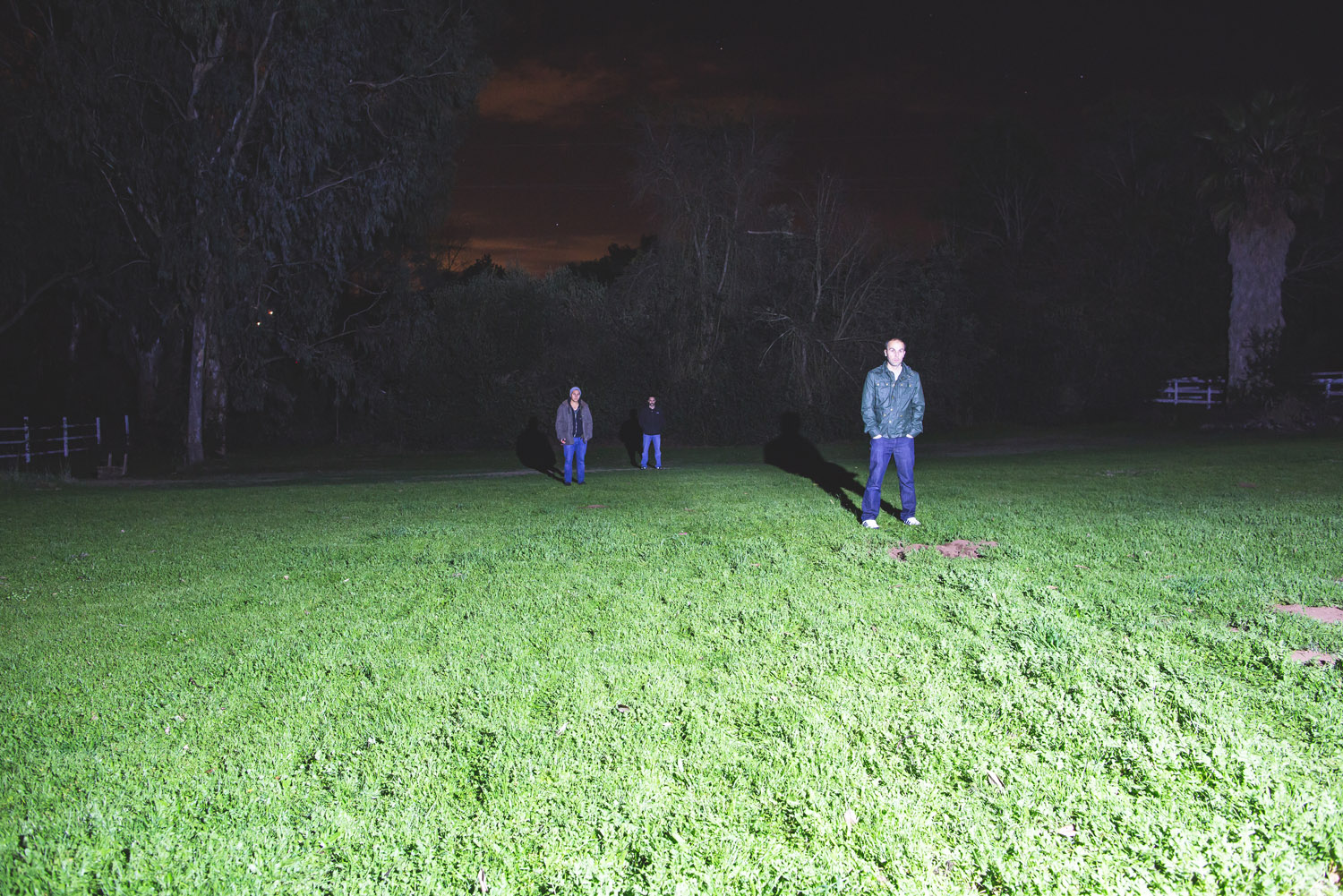
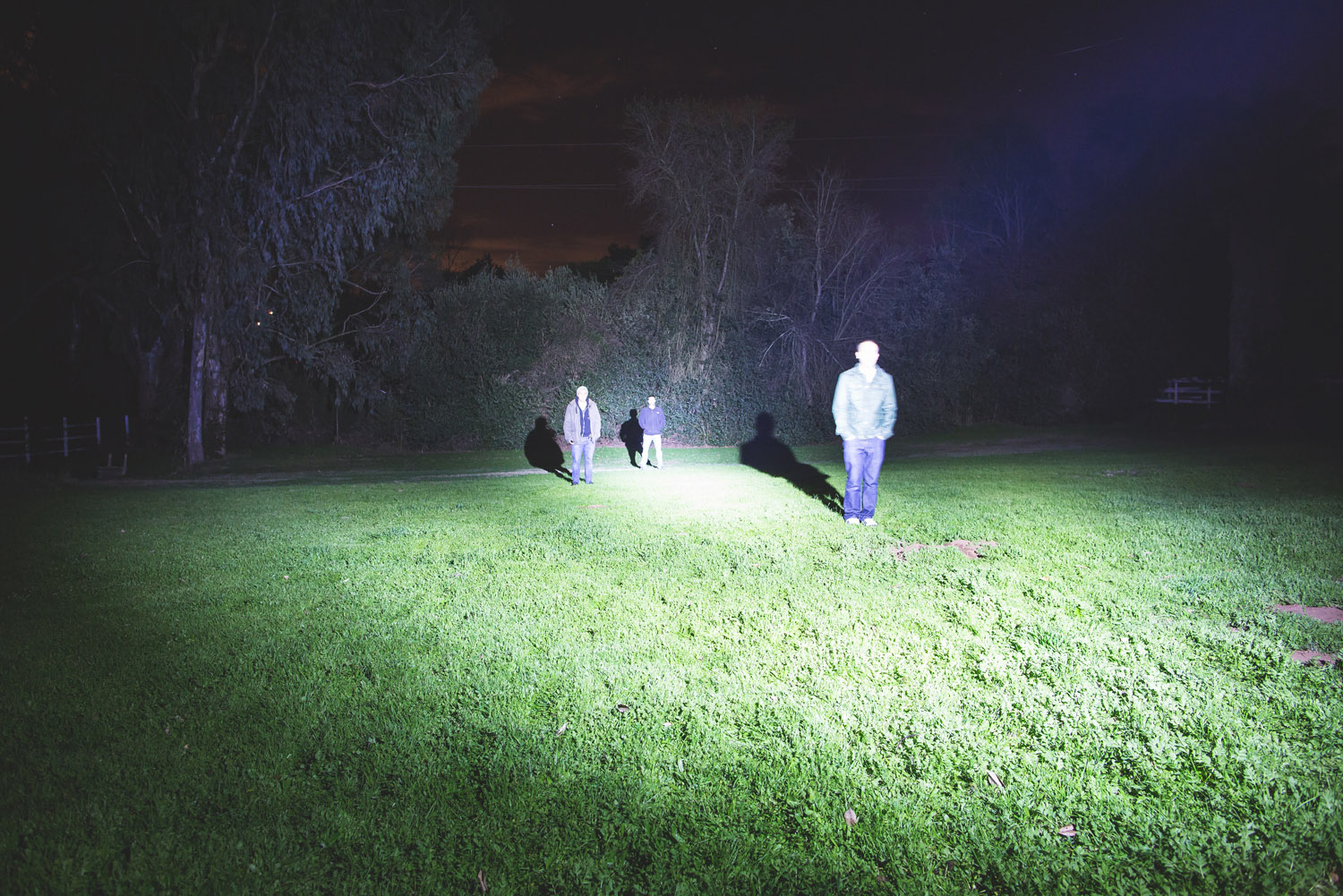
Waterproof - Water is almost always present at a fire scene. Whether it’s water from the hoses or a swift water rescue in a river, it’s important to have scene lights that are waterproof and can be deployed in any environment, no matter the conditions.
Speed of deployment - The extra work to set up a generator and run cords to power lights on a dynamic scene can be problematic and time-consuming. This can literally leave crews in the dark, working without proper lighting with increased risk. Portable scene lights allow crews to quickly deploy lights in seconds and move them easily so that the lighting doesn’t hinder their operations
Alleys and the Backs of Buildings - When trucks and engines are confined to the front of buildings or the street, a tall scene light can shine over the top of alley walls and fences.
Illuminate for Drone Overwatch - Drones provide a unique perspective, but a drone's thermal cameras have limited sight abilities at night. With a high-profile scene light, your drone will be able to see nighttime elements that the thermal camera can not pick up.
Incident Command - The IC is often positioned away from the apparatus at the scene. A portable scene light can provide lighting for the Chief's equipment, tools, radios, etc., without taking up valuable storage space within the command vehicle/Battalion car. Depending on the nature of the incident, Command Posts may need to be relocated quickly. Portable lighting allows the Command Staff the ease of deployment and the flexibility of portability.
Entryways and Points of Egress - These are often not located in the same area. Entryways and points of egress can be far away from an apparatus mounted scene light. Firefighters need a toolbox of lighting applications that includes a portable scene light that is easy to move, can handle rugged terrain and environmental conditions. This isn’t a request; it is a requirement for the job of a firefighter.
Dynamic Situations - An Emergency Incident such as a structure fire can quickly escalate into a HazMat situation and/or a building collapse that alters the entry or escape routes. Portable lighting that can be moved and promptly assembled is critical for these dynamic scenarios.
Chief Andy Starnes explains the importance of lighting for structure firefighters in this informative webinar!
Immediate Area Situational Awareness - Wildland firefighters often work in steep terrain, rocky forests, thick brush, tall grass, mountains, chaparral, all types of vegetation. Working a vegetation or wildland fire at night is very dangerous. The inability to see the area around them could quickly lead to injury.
When working on a dime on the fireground, it's important for the firefighter to know where they are in relation to their other crew members. To maximize safety, a firefighter needs to keep their safety zone and avoid getting hit with a swing tool or errant chainsaw. When working at night, a headlamp will provide better visibility to other firefighters working nearby.
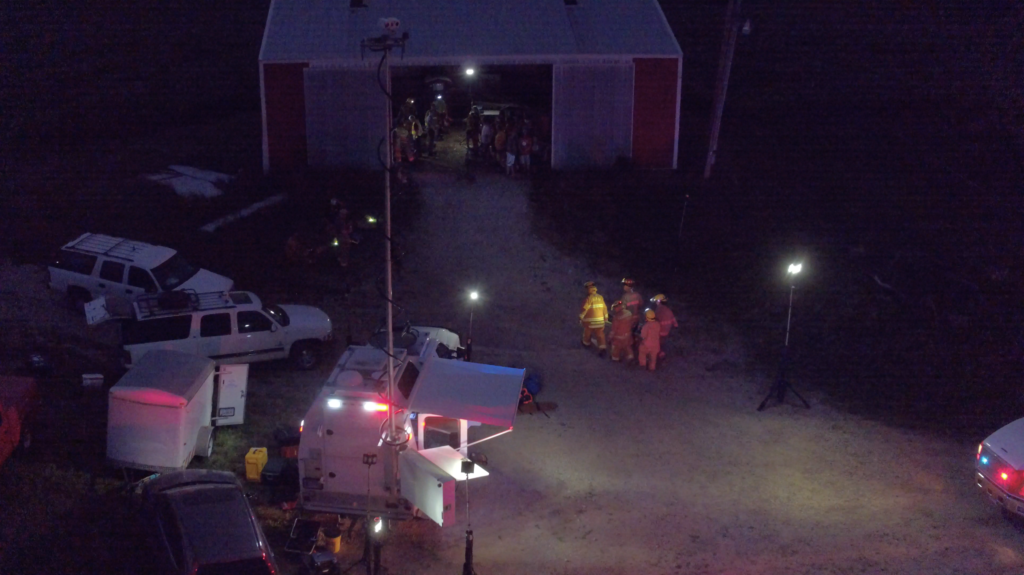
Visibility from Command Post, Scouts, Air Ops - A flashing beacon light attached to a wildland firefighter’s pack or jacket will provide additional visibility to their location from air ops, drones, or Command Post.
Firefighters work in all types of conditions, and many of these calls occur at night or in dark situations, such as basements, or a rural roadway at night, and confined spaces. Often, responders "make do" with the existing light and move the patient to a place where they can better see their injuries.
It’s common to carry a small flashlight or penlight in a medical bag. An EMT can illuminate a patient's wounds or diagnose a condition, but it must be held with one hand, which compromises a first responder’s ability to provide care. Other common options are to tuck the light between the shoulder and neck or even clasp the light between the teeth.
Besides being very inefficient and uncomfortable, these last two methods increase the spread of biological infection from the gloves that touched the patient and then the flashlight. It is far better to have a light on a helmet, radio strap, or clipped to the first responder, allowing their hands to be free to provide care without concerns of contamination or dropping the light into potentially infectious materials.
Situational Awareness - Upon entering a scene at night, a first responder needs to quickly assess the situation, the number of victims, and the extent of their injuries. Scene assessment may require the first responder to search for clues to explain further the situation, such as medications, needles, or weapons. A slip, trip, or fall due to a misstep into rusty metal could result in injury. Therefore it is critical to have an adequately bright light to make fast, accurate decisions.
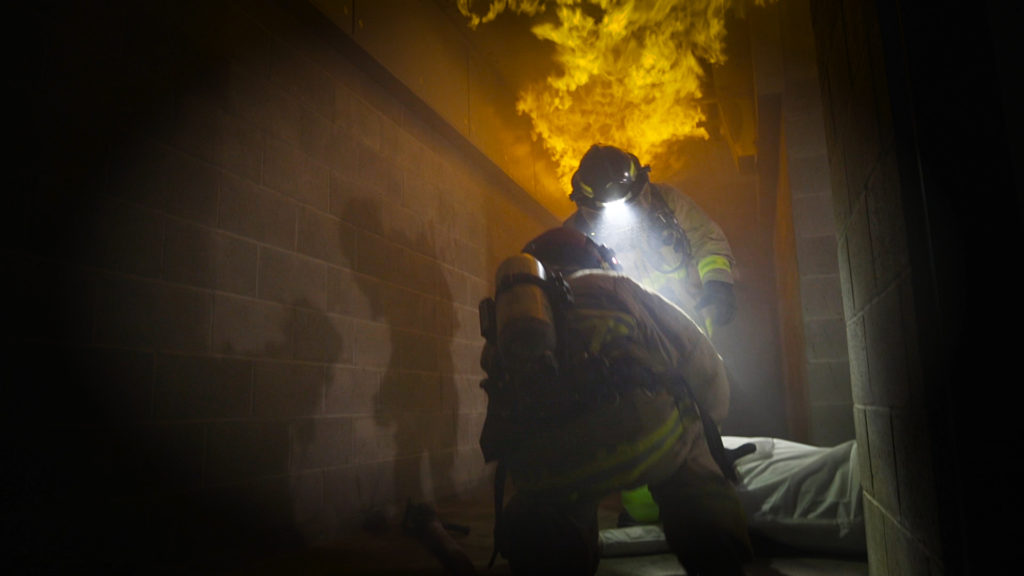
Attackers - Confused or mentally unstable people on a scene can harass or even attack EMS personnel while caring for a patient. In darkened areas, the proper light will provide situational awareness of any potential incoming persons so they may have time to react and respond accordingly.
Task lighting - Most of an EMS personnel’s work is done at close range. Whether it's working on a patient or working out of a medical bag, this will often be within a 2-6’ distance. The most powerful right angle light is not necessarily needed for many of these situations. A broad and even light that illuminates that immediate work area is the most effective light.
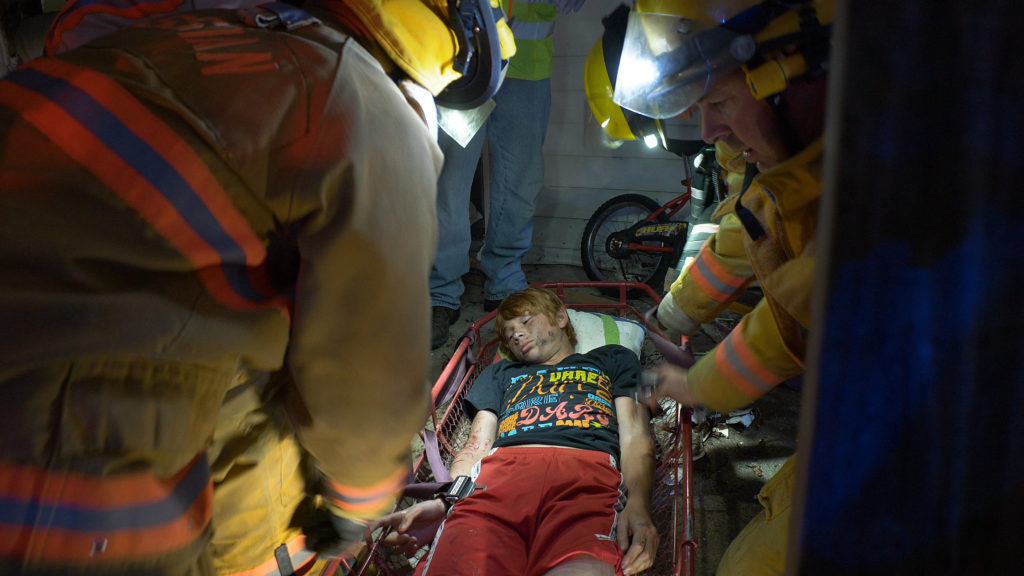
Precision work - In the medical role, quality is needed over quantity in terms of lighting. A light that provides a bright, even color and an accurate beam will be far more useful than a high powered spotlight. Patient assessments of determining a person’s well being require the proper lighting to assess factors such as skin color, pupil response, capillary refill, and other signs/symptoms. A light with a high-quality beam will help to make decisions quickly and precisely.
Wide Panoramic - This is best for immediate range task lighting. The broad beam improves situational awareness. The wide beam is also effective for reading smoke directly above the firefighter's head, such as a tilted headlamp.
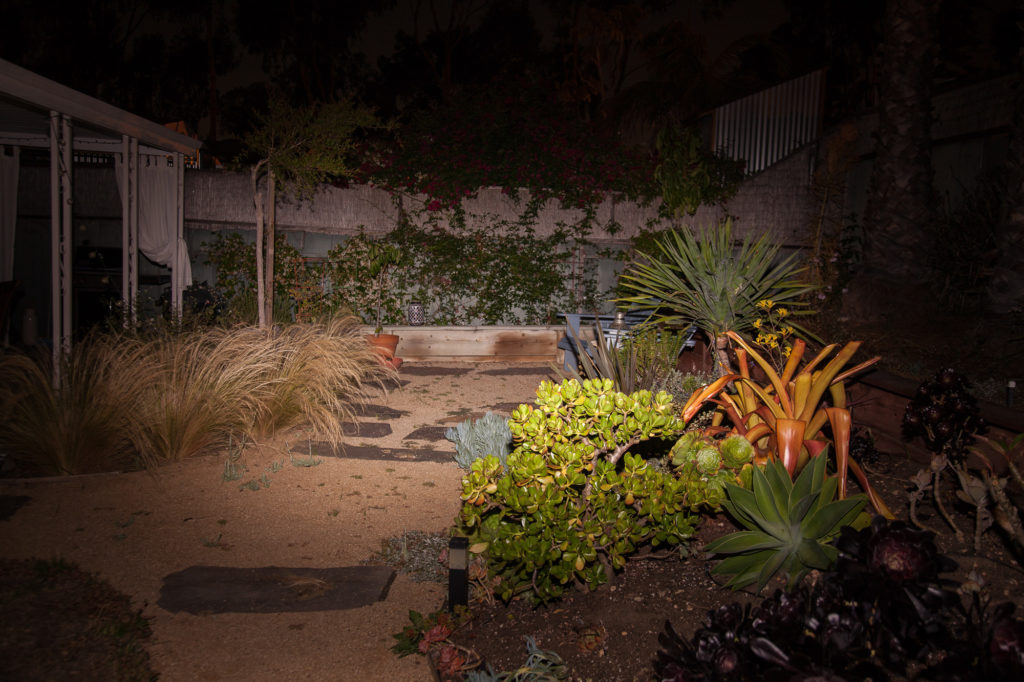
Tight Spot - This is ideal for long-range search, cutting through smoke, for illuminated specific target areas for search or stream placement during fire suppression efforts.
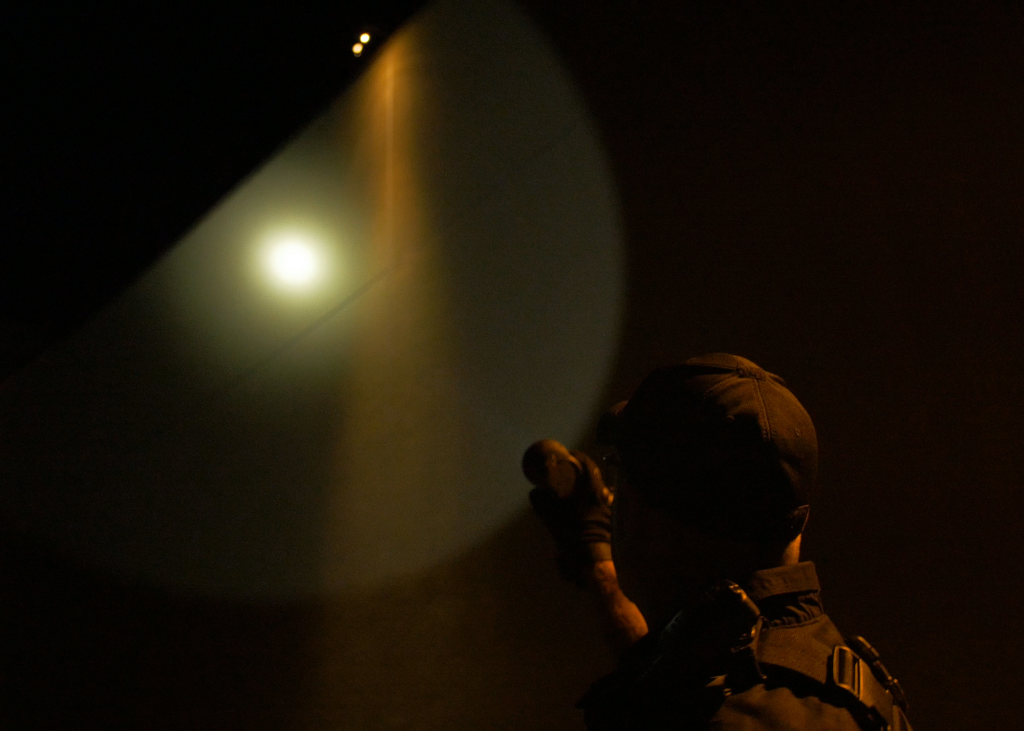
Task-based - Let us consider what we are using the light for? If it is short-range task lighting, we don’t necessarily need the most powerful light on the market. High lumens are a high priority for long-range search or lighting up the entire scene.
| Short range task | 1-6 feet | 60-200 lumens |
| Mid range search | 5-25 feet | 200-700 lumens |
| Area scene lighting | 10-60 feet | 3000-10000 lumens |
Water - Water is a factor in almost all fires. Fire crews assist in water rescues and flooding disasters. This requires that a headlamp has to be waterproof.
Water-resistant lights may withstand some light rain or water on fire scenes, but only truly waterproof tools can survive water rescues and flooding. Water can easily get into electrical components and battery packs, damaging the inner workings of the light.
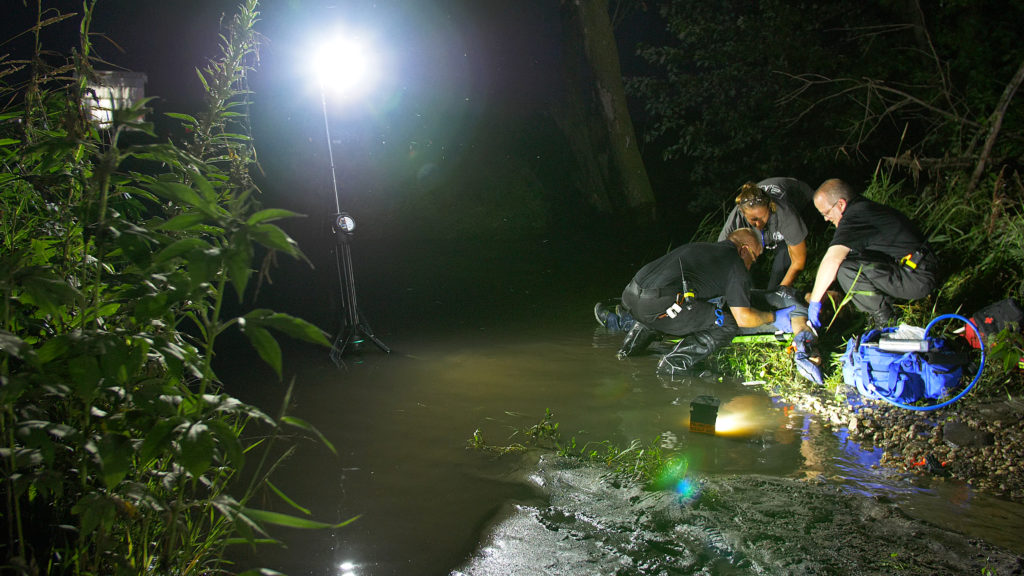
Lights use an IP rating to measure moisture permeability. An IPX6 rating would be the minimum water protection for a reliable light for fire service. Ideally, an IPX7 ensures that the light is fully waterproof and can withstand the harshest of environments that will be encountered.
Fire - Any light must be built tough if it’s going to survive firefighting conditions. In the U.S., a fire-resistant light must meet the NFPA 1971 standard. It must withstand 500 degrees Fahrenheit for 5 minutes.
Impact - It’s said that firefighters could break an anvil if left alone with no tools in a rubber room. If anyone can break a light, it would be firefighters. The endless bumps, drops, falling debris, and various other impacts will test the most durable lights.
Many new lights on the market have new “innovative” features that break off or fail to function after a few rounds in the field, rendering them useless. A simple, durable design holds up to repeated abuse and is more reliable in the long run.
Over the last 10 years, carcinogens have become the center of a lot of news attention in the firefighting world. Burnt helmets and equipment are now viewed as liabilities rather than badges of honor. Given the changes in combustible materials, including the use of cheaper plastics, today’s structure and wildland fires are more dangerous than ever.
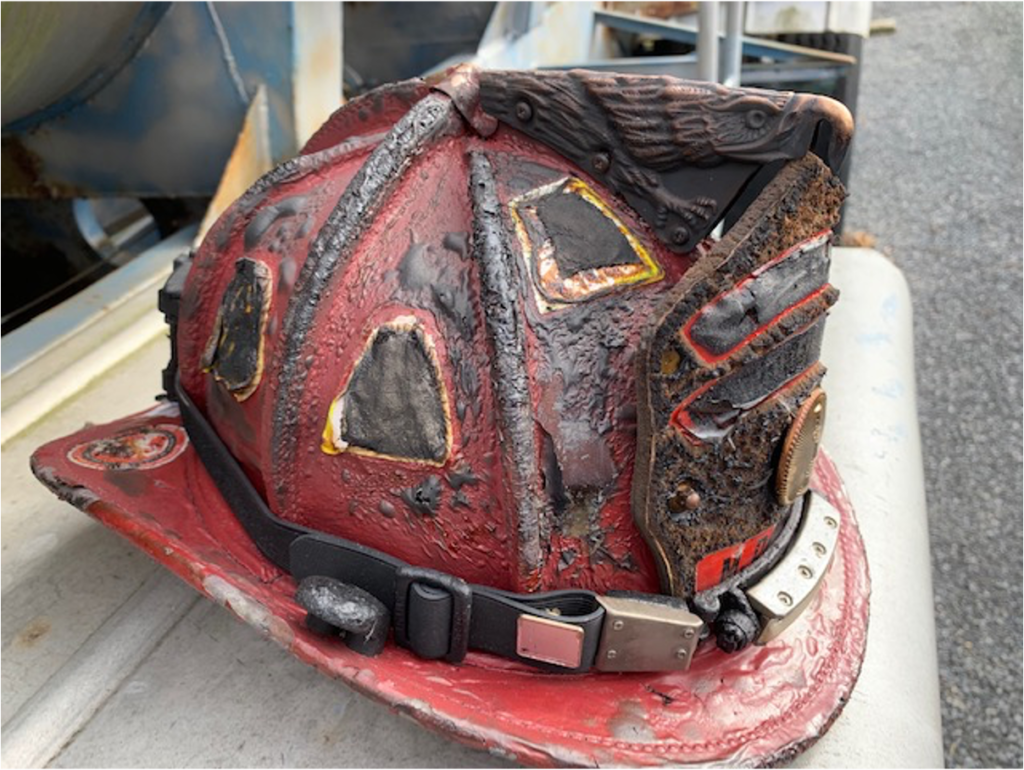
With a growing number of medical calls and infectious diseases, it is imperative to decontaminate gear to prevent disease spread. Firefighters need to decontaminate their lights just like the rest of their gear.
A preliminary exposure reduction is gross field decontamination of PPE with water and soap. It must hold up to repeated battle rounds of water, soap, and hose stream.
Others wipe their equipment down with decon cleaner like FireWipes. Depending upon the level of exposure, the equipment may need to be sent to a specialist for extensive decontamination and cleaning.
Batteries come in all sorts of form factors, including AA, AAA, CR123, 18650, and many others. It's what's inside that really counts. Here, we'll go through the different types of batteries and the advantages and disadvantages of each.
Alkaline - AA alkaline batteries are the gold standard in the fire service. Lights, radios, cameras, and a variety of other electronics use AA alkaline batteries. Alkaline batteries are relatively inexpensive and are widely available anywhere. They are stable and handle extreme heat. Most all lights are rated to work with the output that alkaline batteries provide.
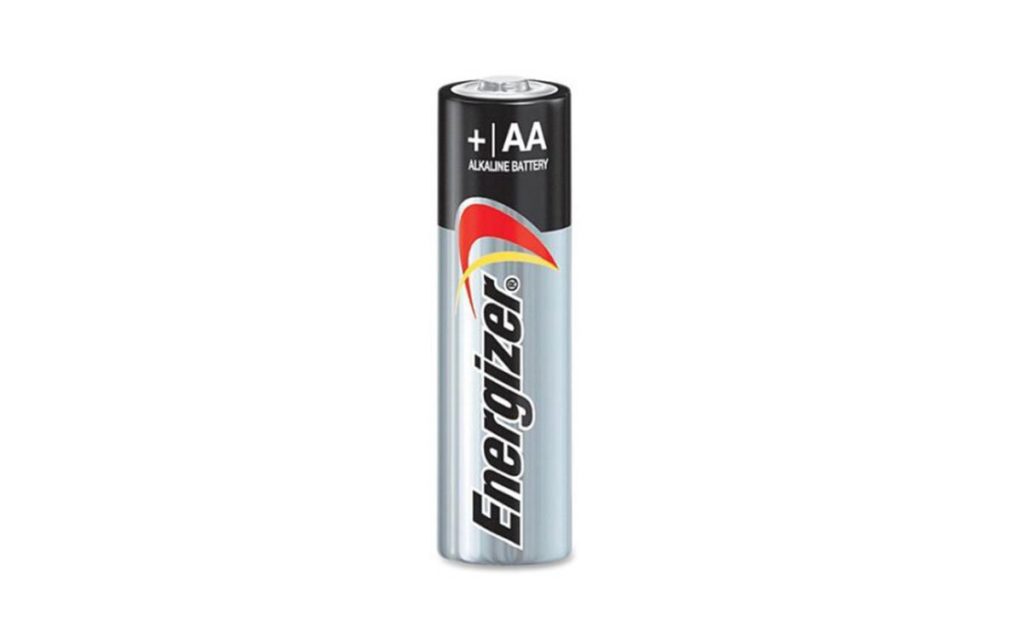
NiMH rechargeable - Rechargeable NiMH batteries in AA or AAA format are another option for lights. They do require you to keep batteries charged. If you are running long shifts, you need to have charged back up batteries available.
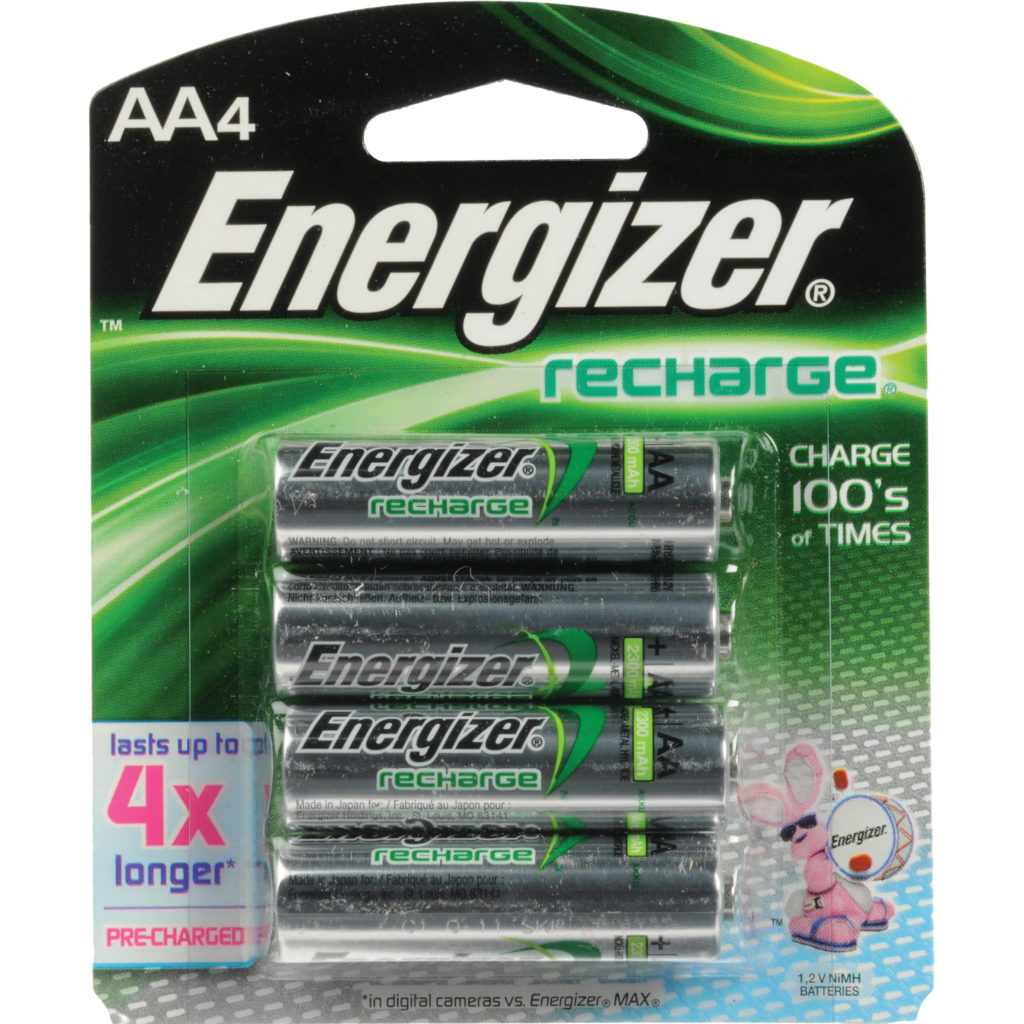
NiMH batteries will typically run much longer than their alkaline counterparts. When sourcing NiMH rechargeable batteries, make sure to get at least 2000 mAh.
Lithium - Lithium batteries are lighter and will outperform an alkaline battery. On the other hand, they cost more than AA batteries and will be harder to source if it fails in the middle of a long shift or power outage. They are good for high output devices like a high lumen light or camera. They also perform better at extreme temperatures.
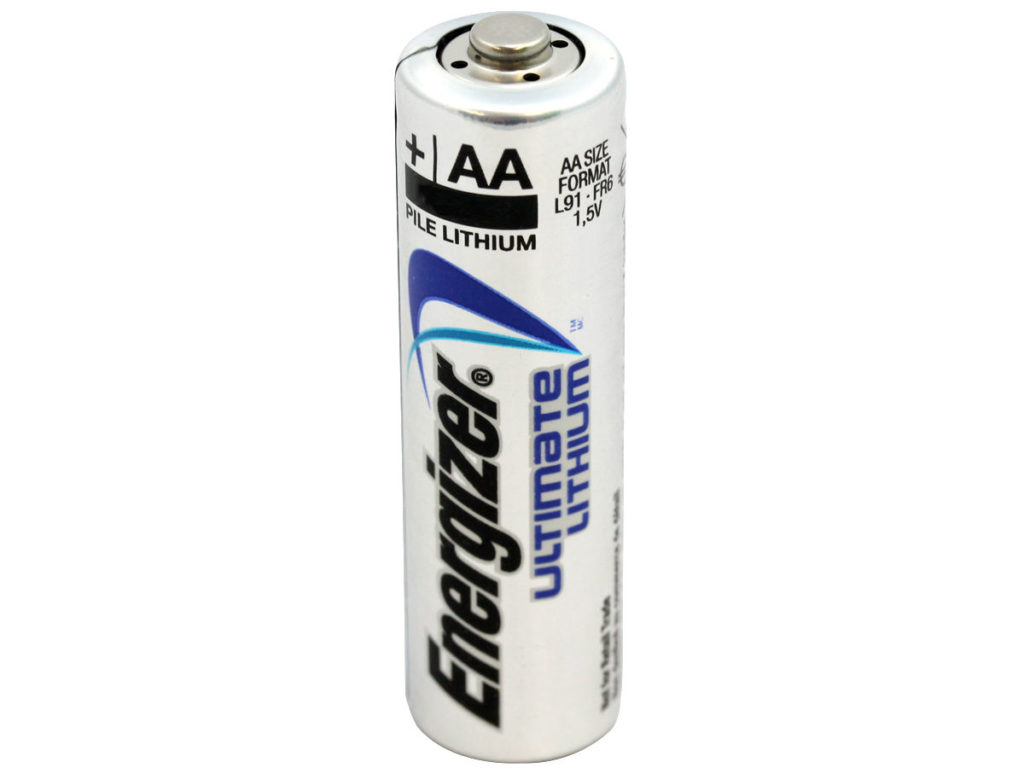
Caution: Lithium has a higher voltage capacity that can damage some electronics. Make sure your light can accept lithium batteries.
Lithium-Ion (L-Ion) - Lithium-Ion is a rechargeable form of a lithium battery. It shares the same performance characteristics as Lithium batteries. And, it also shares a higher price tag as well.
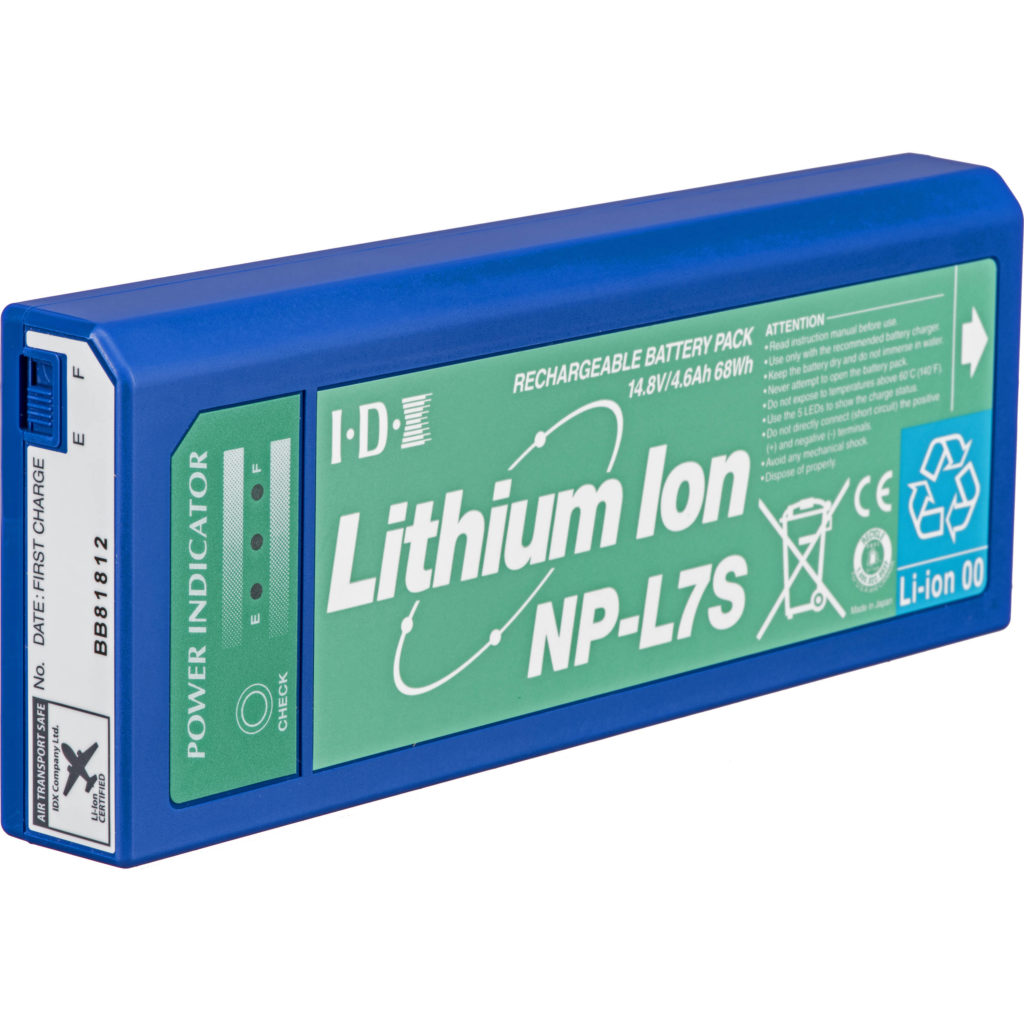
Lithium is not typically used in AA, AAA, C, or D formats. It is more commonly used in block or slab forms like a power bank or power charger.
Lithium Polymer (LiPo) - LiPo batteries are widely used in many consumer electronics. They are lighter weight and have a higher capacity and discharge than NiMH or L-Ion batteries, so they work well for electronics that have higher draws like drones.
LiPo batteries do have a shorter life of 150-250 cycles. Larger LiPo batteries require extra care for storage and transportation due to their volatility if damaged or stressed by extreme temperatures.
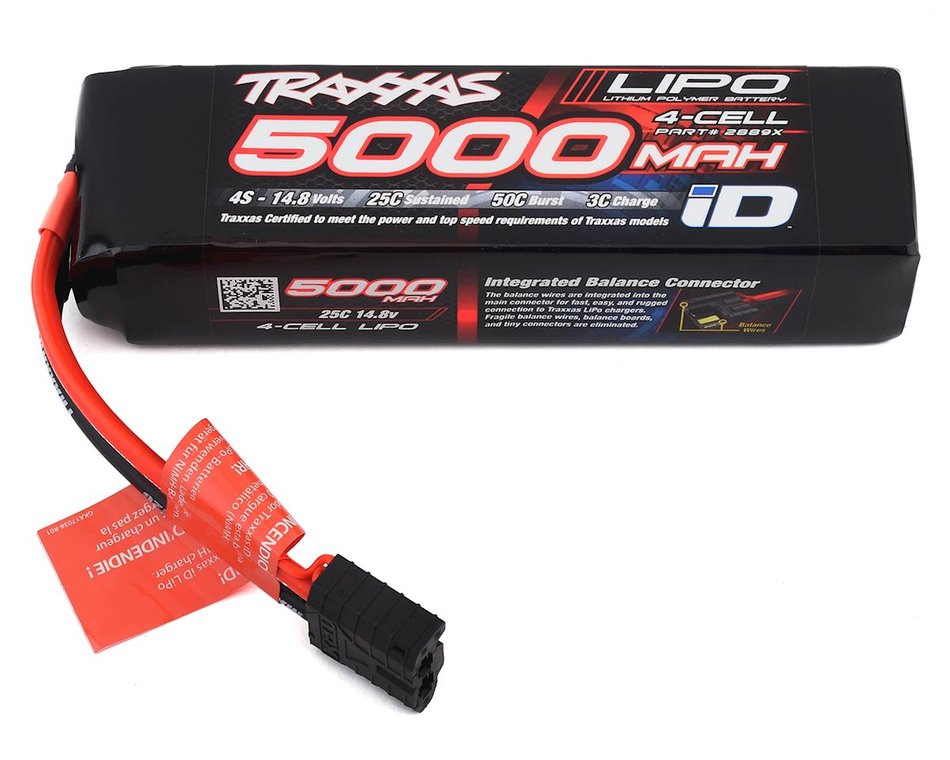
As with any electronic device or light, ensure that the same brand and age of battery are used in each light. Don't use two different brands of batteries or an old and new battery within the same light. This can result in decreased runtimes, overload, or corrosion.
However, whatever choice you make on batteries, make sure you have access to backup batteries, so you don’t get left in the dark at the most critical time.
Battery needs are based on the job. How long is the shift? Are you able to recharge? Is the light used for short stints or staying on for hours at a time. Do you need maximum brightness or long runtime?
Fortunately, LED lights are far more efficient, and batteries are getting more powerful and lighter. But, there is always a compromise when factoring in runtime, brightness, weight, and cost.
Use a bigger and more expensive battery source if you want longer runtime and brightness. Lighter weight batteries will result in shorter runtime or diminished brightness. Determine your priorities and how the light will be used. That will ultimately determine the best power source to choose.
First responders are incredibly demanding on equipment. If a light fails under a compromising situation, it could result in serious injury or even death.
However, there’s no guarantee that a light won’t fail under the worst conditions. The investment in a quality light designed for firefighting rigors and constructed with the highest quality materials will provide firefighters with confidence to focus on their job, not their equipment.
Damaged equipment is a liability and needs to be repaired or replaced ASAP. When this happens, it is important to know that the manufacturer or reseller will repair or replace the product quickly.
Warranties exist to provide peace of mind. Limited lifetime warranties exist for one of two reasons:
Due to their jobs' life and death nature, firefighters need products that are built to the highest standards with the best materials. Firefighters owe it to themselves and the community that they serve to have the tools to perform when needed to get the job done.
Hazardous gases and chemicals are frequent at fire and emergency scenes. Firefighters frequently working in these scenarios require intrinsically safe equipment.
There are a few important things to consider with intrinsically safe lights:
There's no question that lighting is critical for firefighters to stay safe and do their job. When entering dark, smoky structures or working a dark roadway, having the right light can be the critical difference in saving lives.
It's important to understand the differences between helmet lights, right angle lights, and scene lights. Each lighting tool serves a different need. Whatever lights you choose to use, utilize redundancy in your system.
Thanks to Chief Andrew Starnes for his assistance on this article. Andy is the founder and lead trainer for Insight Training LLC, a fire behavior and thermal imaging training service based in North Carolina.



Enter your details below to save your shopping cart for later.